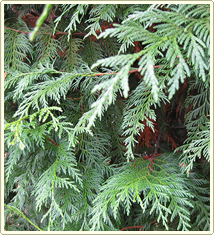A Way Home – Ecopsychology and the Renewal of Ourselves and Our World
Ecopsychology seeks to explore this interrelatedness between nature and our inner worlds, not just as an intellectual exercise, but to bring conscious awareness to the experience. In so doing, we come home again. Ecopsychology returns poetic imagination to a world that has been categorized and described by the disciplined thinking of science. It opens us to a rich, life-affirming, nourishing mystery. An ecopsychological consciousness allows us to see with two eyes – the view of science, and the view of imagination, feeling and intuition. These two ways of seeing, together, bring us the depth of vision needed to imagine a new world.
Indigenous peoples see the world in a way that blends physical and mythical realities. Among northwest peoples, for example, raven is not only a particular black bird that thrives in particular habitats. He is also Raven, a trickster figure who, while often lazy and not to be trusted, cleverly rescues the sun and brings it back to the world, after it had been stolen and the world became dark and cold. There are several traditional stories with this theme. All peoples have this mingling of worlds in their folk traditions. Seven ravens have lived in the Tower of London for hundreds of years. The legend is that if they were no longer there the Tower would fall and England would face disaster. The origin of this custom is shrouded in legend, but the care of 7 resident ravens in the Tower continues to this day.
We all, individually, experience nature symbolically as well as physically. This is why stormy oceans or snowy landscapes figure in some of our most powerful dreams. Our society has, however, relegated this type of imagination to the realm of sleep. Our waking world is limited to what we see with our senses; our concepts informed by a rational sensibility.
I do not mean to disrespect rational thinking, or science, in any way. Science is an amazing body of skill and knowledge that has allowed humanity to accomplish things that our forbears could not even imagine. It is, however, a tool, and like any tool, is not useful for all things. The psyche also needs imagination, symbology, and feeling in order to thrive. Our society’s relationship with the natural world suffers for the lack of this dimension.
Where I live, on the north side of Whatcom Falls Park, the scars that remain from the 1999 pipeline explosion are still visible, though no longer obvious. Everyone who lived in Bellingham on that day remembers the huge cloud of smoke rising over the Park, as gasoline that had leaked from a pipeline into the creek burned. The flames rose out of the water, torching the trees and brush that lined the steep slopes of the ravine. Three people died. It was devastating. I am grateful to live in a community that rallied in the face of disaster the way that Bellingham did in 1999.
I recently walked the Park, remembering the many experiences I have had there, before and since the explosion. As I passed through what had been called the “burn zone” I was profoundly impacted by the burgeoning of life everywhere. The barren slopes and blackened trees had remained for a long time after the explosion, despite the dedicated work to clean the creek and restore the creekside. Now, thirteen years later, that loss is barely visible. The dead snags rise up through lush undergrowth, including young trees. The snags themselves provide a home for nesting osprey, and for the bugs that are food for pileated and other woodpeckers.

